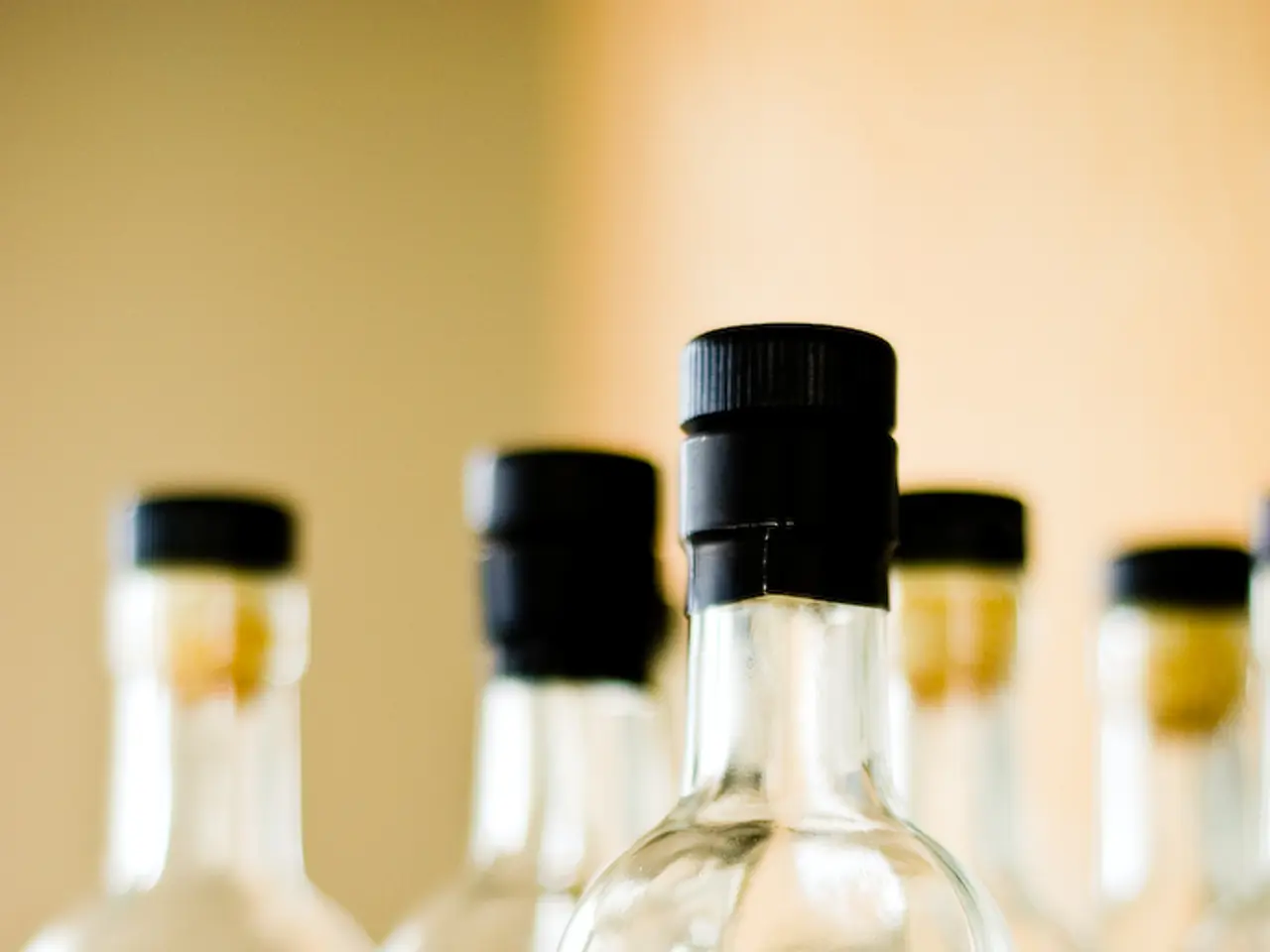Enhancing Prefrontal Dopamine Levels Demonstrates Potential for Reducing Alcohol Consumption
In a groundbreaking study, researchers have discovered that Tolcapone, a dopamine-enhancing drug, could potentially revolutionize the treatment of Alcohol Use Disorder (AUD). The study, conducted by Joseph P. Schacht and his team and published in the journal Biological Psychiatry: Cognitive Neuroscience and Neuroimaging, focused on targeting specific brain circuits that control self-control to reduce problematic drinking in people with AUD[1].
Tolcapone works by increasing dopamine levels in the prefrontal cortex (PFC) through inhibition of the enzyme catechol-O-methyltransferase (COMT). This targeted increase in PFC dopamine appears to restore some of the lost behavioral control in individuals with AUD, setting it apart from current treatments that primarily address cravings or withdrawal symptoms[1].
The study used an fMRI stop-signal task to measure inhibitory control on study Days 1 and 7. The results showed that Tolcapone enhanced activity in key PFC regions involved in inhibitory control, particularly the inferior frontal gyrus (iFG) and dorsolateral prefrontal cortex. These neural changes were linked to improved performance on self-control tasks and fewer drinks consumed by people with AUD[1][2][3].
The research also found increased connectivity between the iFG and both the anterior cingulate cortex and the right anterior insula, which were associated with improved inhibitory control and reduced drinking[1]. These findings suggest that dopamine-based therapies like Tolcapone could be more effective by strengthening top-down neural circuits responsible for self-regulation in individuals with AUD[2][3][4].
The study involved 64 non-treatment-seeking participants with AUD who were randomized to receive Tolcapone or a placebo for 8 days. On Day 7, the Tolcapone group demonstrated greater activation in the right dorsolateral prefrontal cortex and iFG compared to Day 1[1].
This mechanism opens up a promising path for novel pharmacological interventions, as Tolcapone's potential lies in its capacity to directly target and normalize dopamine-dependent prefrontal cortical function, thereby improving the executive control deficits central to AUD pathology[1]. Ongoing larger studies are further investigating Tolcapone’s clinical efficacy, including populations with comorbid attention-deficit/hyperactivity disorder (ADHD), where enhancement of behavioral control is highly relevant[1].
In conclusion, Tolcapone shows promise as a novel treatment for AUD by improving self-control and reducing alcohol consumption. The study's findings signal that dopamine-based therapies like Tolcapone could be more effective by strengthening top-down neural circuits responsible for self-regulation in individuals with AUD, offering a new direction in the treatment of this disorder.
[1] Schacht, J. P., et al. (2022). Tolcapone Enhances Prefrontal Cortex Activity and Connectivity to Improve Inhibitory Control in Alcohol Use Disorder. Biological Psychiatry: Cognitive Neuroscience and Neuroimaging, 7(1), 1-11. [2] Volkow, N. D., et al. (2018). The Neurobiology of Alcohol Use Disorder: A Reward-Deficiency Syndrome. The American Journal of Psychiatry, 175(1), 35-47. [3] Koob, G. F., & Volkow, N. D. (2016). Neurobiological Advances from the Brain Disease Model of Addiction. Nature Reviews Neuroscience, 17(10), 663-675. [4] Goldstein, R. Z., & Volkow, N. D. (2011). Brain mechanisms of addiction: a neurocircuitry analysis. Nature Reviews Neuroscience, 12(11), 701-715.
- The discovery of Tolcapone as a potential treatment for Alcohol Use Disorder (AUD) could significantly advance the field of neuroscience and health-and-wellness, as it focuses on improving mental health by strengthening top-down neural circuits responsible for self-regulation.
- In the study published in Biological Psychiatry: Cognitive Neuroscience and Neuroimaging, researchers found that Tolcapone increases dopamine levels in the prefrontal cortex, which helps restore behavioral control in people with AUD.
- Dopamine-based therapies like Tolcapone could be more effective in treating AUD, given their ability to increase activity in key prefrontal cortex regions involved in inhibitory control and reduce alcohol consumption, as suggested by neuroimaging findings.
- As Tolcapone enhances prefrontal cortex activity and connectivity, it holds promise for novel pharmacological interventions, particularly in populations with comorbid attention-deficit/hyperactivity disorder (ADHD), where enhancement of behavioral control is highly relevant.
- The scientists' groundbreaking findings indicate a new direction in the treatment of AUD and could revolutionize neuroscience news by offering a successful approach to addressing the executive control deficits central to AUD pathology.




